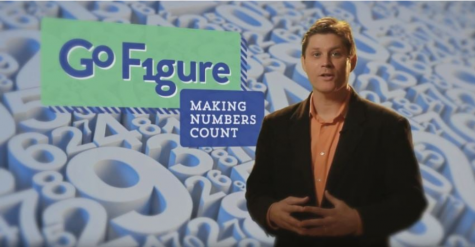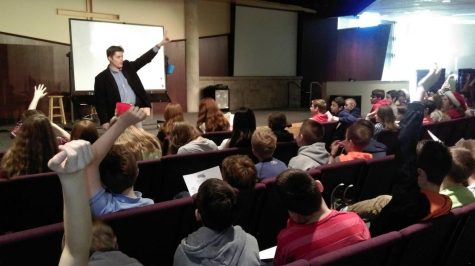Journalist teaches numeracy literacy among COVID pandemic and 2020 Election
November 14, 2020
Matt Baron, a journalist for the likes of the Chicago Tribune, Time, USA Today, etc. has spent years in his own niche as a “numeracy consultant” teaching journalists and now, the general public, on the importance and meaning behind numbers in media (a platform currently dominated by the COVID pandemic and the 2020 election).

What is Numeracy Literacy exactly? Matt Baron describes it as digging deeper into reported numbers and critically analyzing all areas as well as the context of said data (whose reporting the data, where the data is from, how it is presented etc.)
Baron’s program gives individuals the tools, criteria, and necessary questions to ask to help keep us well-informed and not misguided. Initially working as a reporter and attending reporting conferences to teach the concepts of his program/curriculum, Baron changed direction after funding dramatically dropped for such conferences and subsequently couldn’t afford niche expert speakers like him. He was called then to teach to the general public, including students.

Despite its name, Go Figure: Making Numbers Count doesn’t just deal with numbers, it also gives the beginning framework of being a good reporter. One of the leading lessons is that context is everything, especially in reporting and politics. In fact, Baron said in his decades of reporting, politics remains as one of the leading fields of misinformation (small sample sizes used to exaggerate numbers and uses of quantifiable vocabulary being among the top discrepancies).
People can take pieces of unrelated data from decades ago and then spin it to smear individuals. Baron said there is a current conflicted climate of truth telling versus winning, and “winning” is doing just that; which is precisely why students and young journalists need to stand up and promote context/number/critical literacy skills.
Baron has successfully addressed the importance of context, but what of the numbers? Why are the numbers really so important in the context of an election? When posed such questions, Baron said that ultimately, candidates and their policies will inevitably affect peoples’ day to day lives. If just one piece of data is misrepresented, it can skew reports and percentages drastically.
This becomes especially important when policies and proposed laws/policies are dependent on such data. Furthermore people should be aware of the intentions of candidates.
Baron emphasizes to ask, “Why are they saying what they are saying? Are they saying a certain percentage or number to shift the focus away from, say their own investments, failure rates, unemployment levels, etc?”
Some may warp the data to their own advantage. Our memory and even sentences in an article can only fit these bite size pieces of data/numbers, but we have to be critical thinkers and analyze such data points.
Other than be aware/critically thinking, what can young people/students do to help promote numeracy literacy and stop misinformation within a time of widespread tech and hysteria? Baron advises that like any good reporter, we need to “get in the trenches, do as many facets of the storytelling process as possible.”
Essentially, prove something is the truth. Cut out the middleman/third parties by getting in the subject of a story’s own personal space. “Personal space was always more revealing and interesting than a third hand account or phone call.”
Baron also suggested a resource called Allsides.com for unbiased clear information from multiple angles. Lastly, we should strive to promote the idea that common interest is self interest. Baron says, “You can disagree without being disagreeable; be open to new knowledge and the avenues you may get it from.”

